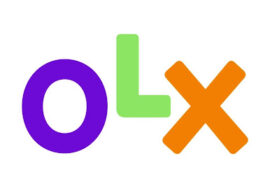
Tips on how to Create Your Personalized Medical Billing Software
People who provide medical services charge their clients for the things they do. The end price must include all of the services that the patient gets, like evaluation, care, prescriptions, and office work. So, hospitals and clinics can speed up the billing process by learning how to make medical billing software.
Using a healthcare billing system can help medical facilities cut down on pricing mistakes that bother both customers and healthcare workers. Next, let’s look at how to make medical billing software that is specific to your business and learn about the other parts of medical billing software.
How do you explain Medical Billing Software?
Healthcare workers can simplify the process of sending out bills with medical billing software. Electronic health record (EHR) systems talk to medical billing apps to keep track of all paid services provided to patients throughout their care, so mistakes can’t happen. Both big hospitals and small offices will gain from putting in a medical billing system.
How does Medical Billing Software work?
Here’s a streamlined explanation of how medical billing software works in a hospital:
- Patients sign in at the front desk upon arrival.
- Healthcare workers verify patients’ insurance eligibility.
- Doctors document the diagnosis and treatments provided.
- Medical codes are assigned to each treatment on the patient’s bill.
- A superbill is generated, detailing all services and their codes.
- The bill is sent to the insurance company or given to the patient.
- The insurance company may approve, alter, or deny the claim. Doctors may need to adjust and resubmit the claim if necessary.
- Once approved, the billing team records the payment, and patients are billed for any remaining charges.
- Financial records are updated to reflect paid claims and outstanding balances.
Here are six simplified steps for creating medical billing software, which you can also do with the help of a software or mobile developer:
Discovery Phase
Start by understanding the market. Look at similar software and get feedback from potential users to build a strong foundation.
Define Requirements
List out what you need for the software based on initial research feedback. This includes technology requirements, platforms, and functionalities. Consider including AI features for better user engagement.
Proof of Concept
Design a simple version of the app to show initial designs and functionality. Get feedback from users to refine it before full development.
Develop the Software
Work with a team including designers, programmers, and project managers to build the software.
Test the Software
Test thoroughly to find and fix bugs. Make sure it performs well under heavy use and meets privacy laws. Adjust based on testing feedback.
Launch and Support
Release the software and monitor it for any initial issues. Provide continuous support to users and train medical staff for better integration.

Key Medical Billing Software Features
The simplest version of medical billing software has a few capabilities to ease the billing process.
Auto-billing process
Many activities are automated by this program, lowering medical staff effort. It automatically transmits patient registration and insurance claim data across departments without human intervention. Set to automatically charge patients using medical codes.
Friendly Interface and Customization
Good medical billing apps are simple to use. It should also allow medical personnel adapt billing methods to boost utilization.
Reporting and Analytics Tools
Medical personnel may develop reports, analyze patient payment patterns, and obtain insights using these tools. The information they give helps teams manage money and increase profits.
Conclusion
Apps improve medical billing accuracy and speed, benefiting patients, physicians, and hospitals. Custom software speeds up patient registration and insurance processing. Healthcare providers may gain billing flexibility by hiring a mobile app developer to construct a personalized app.








